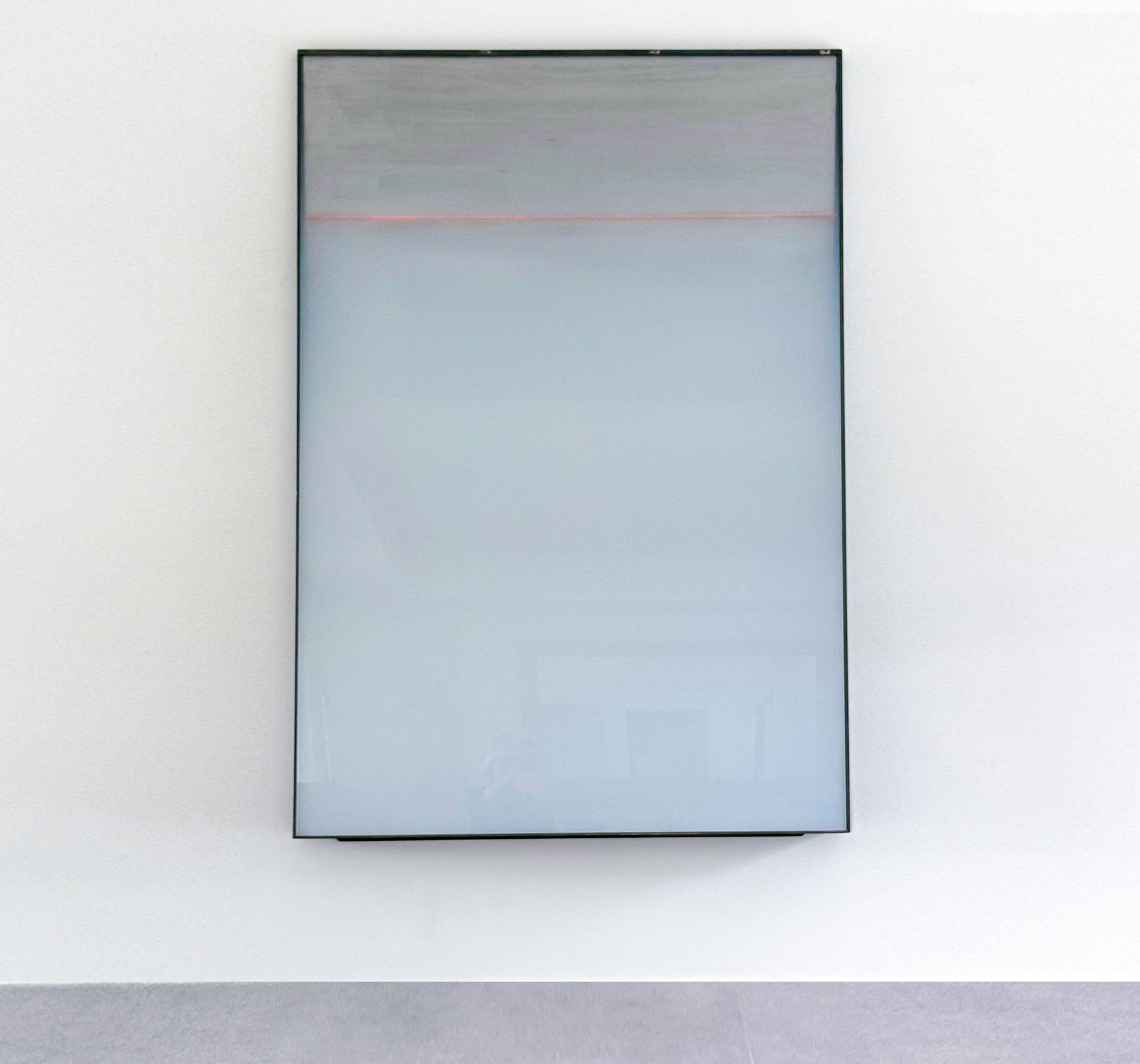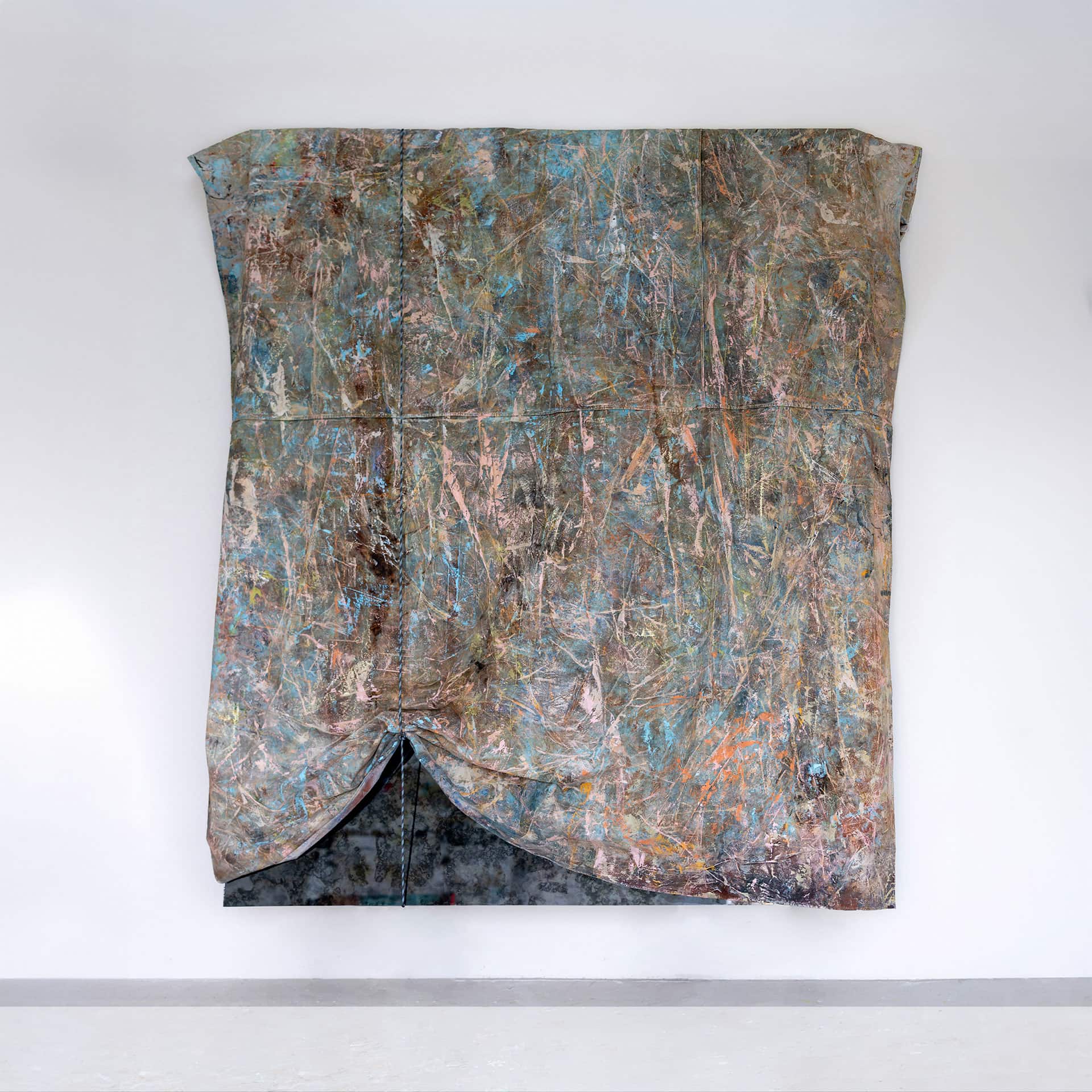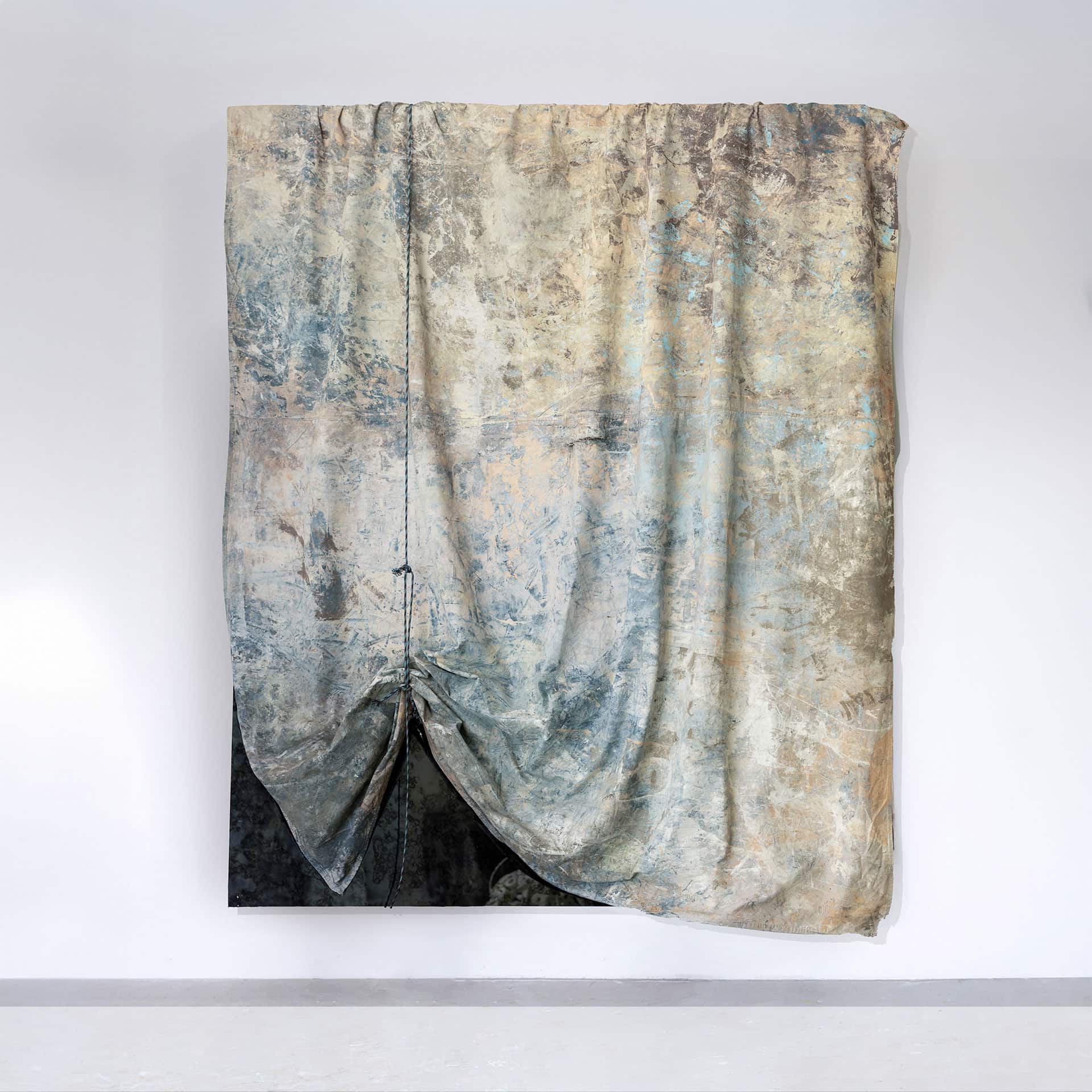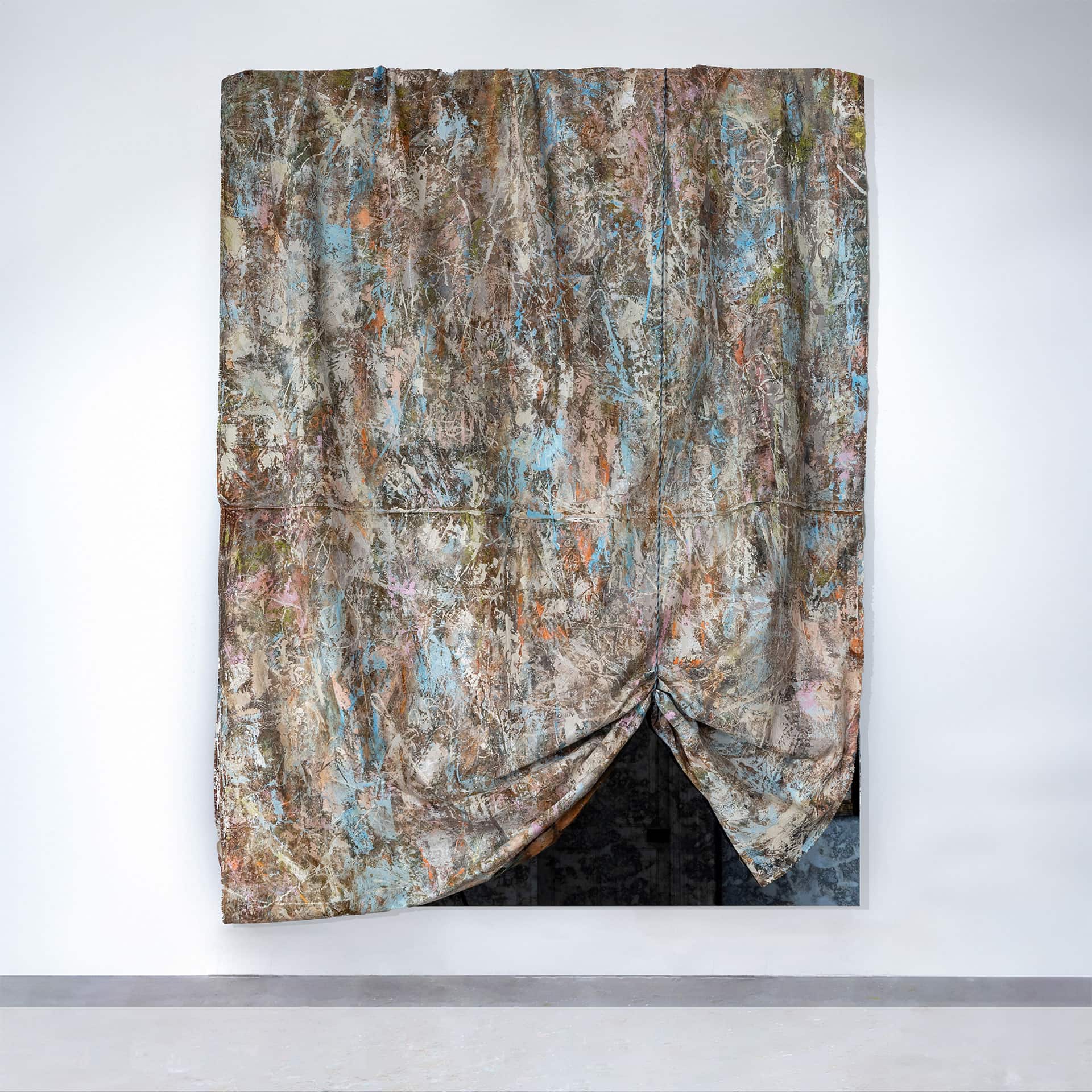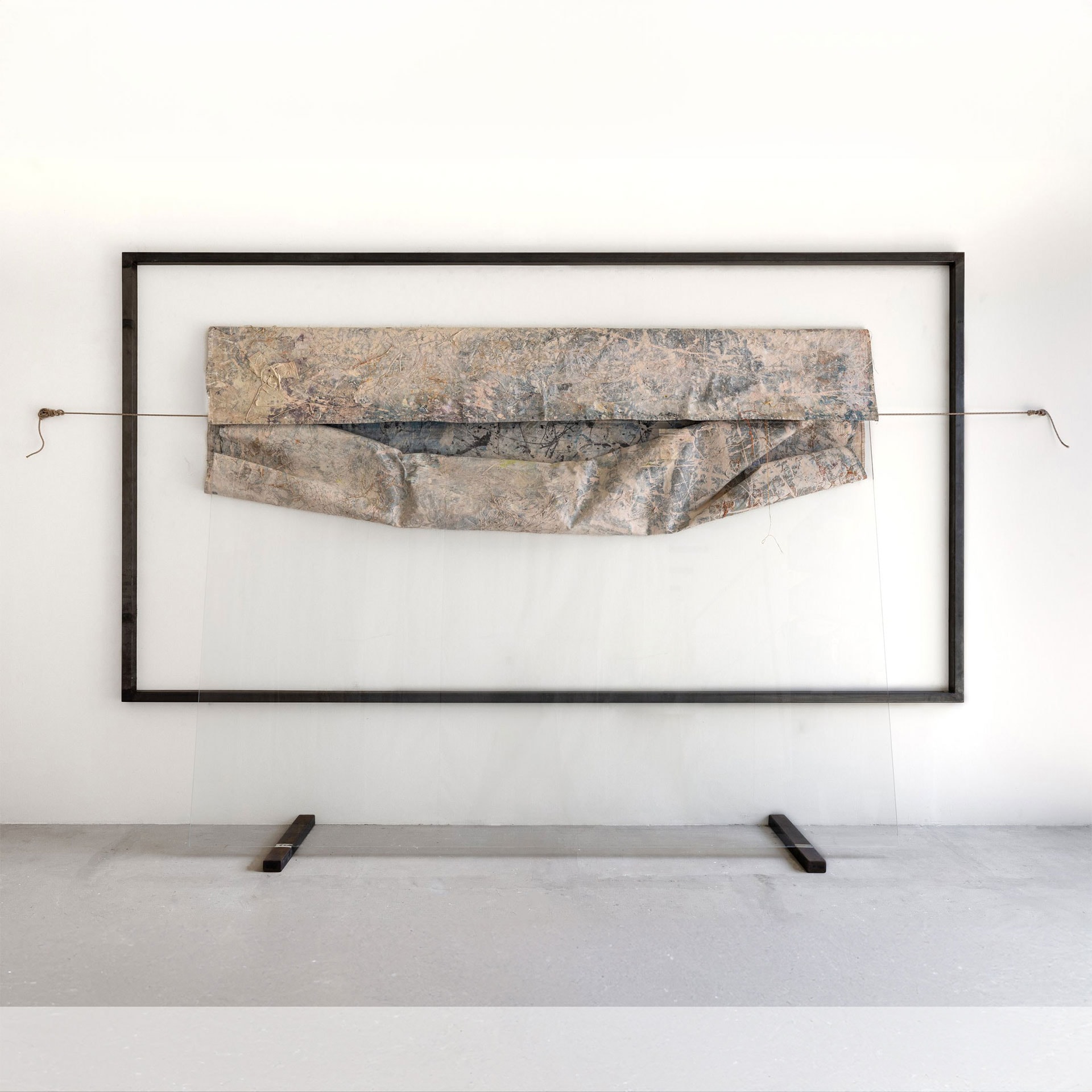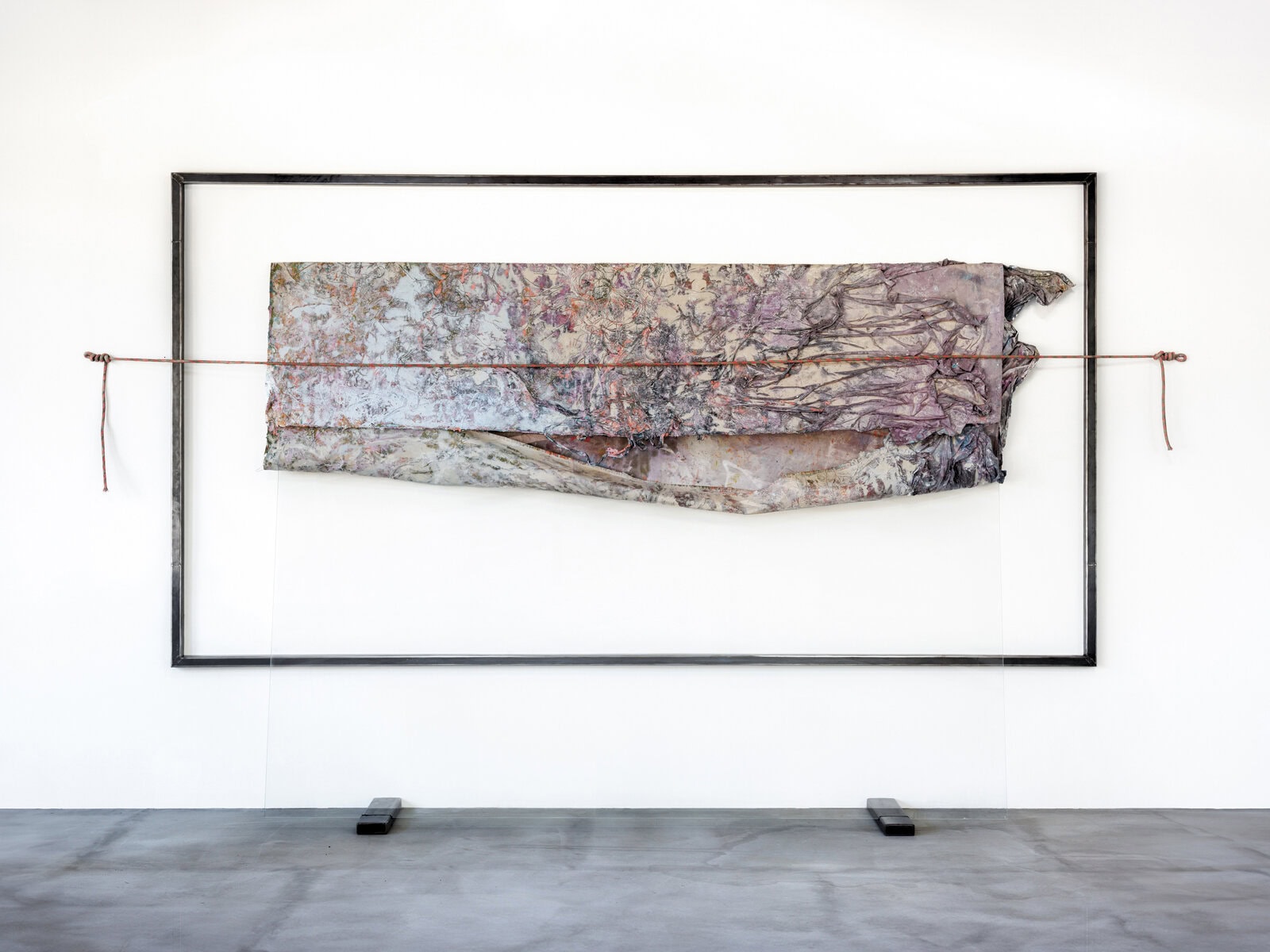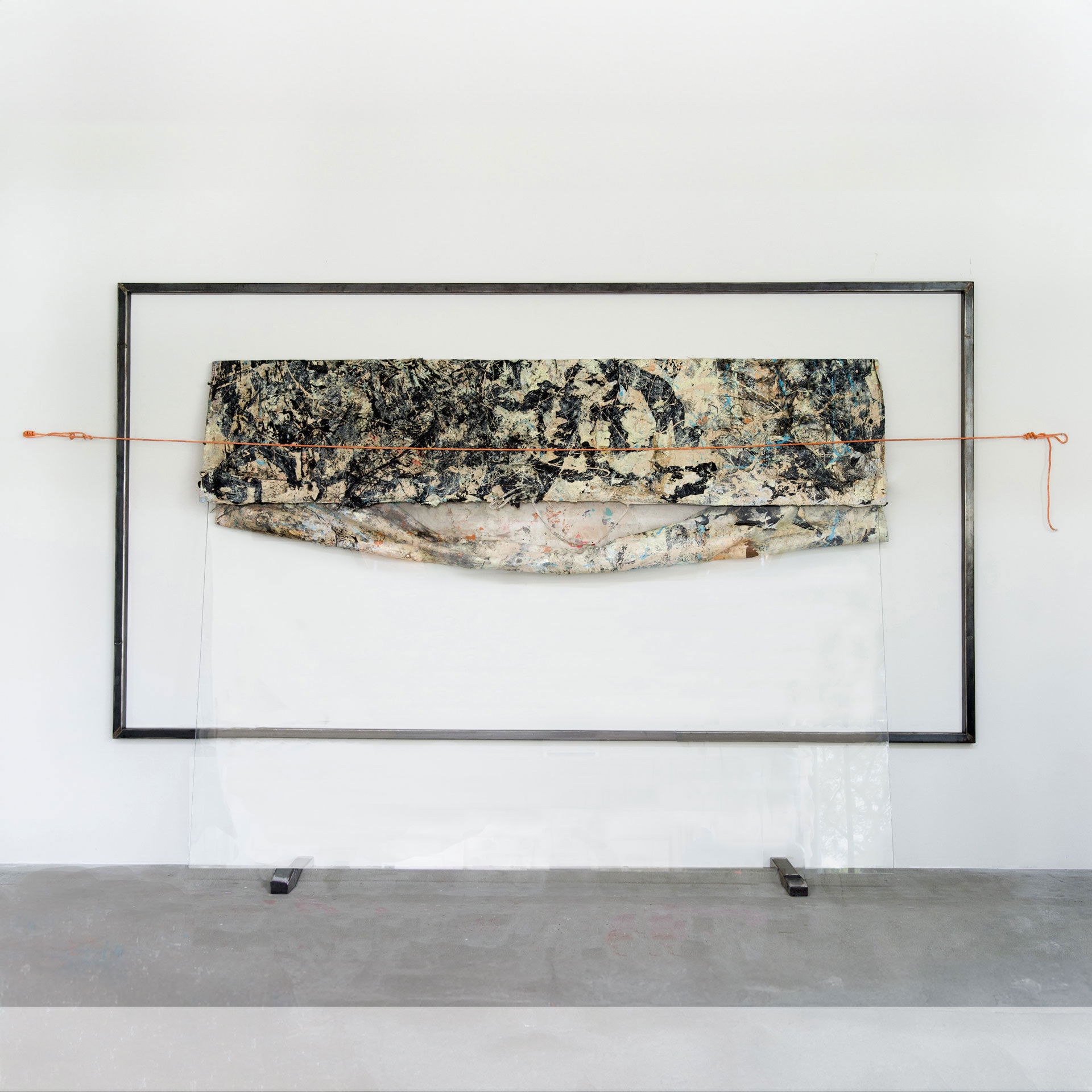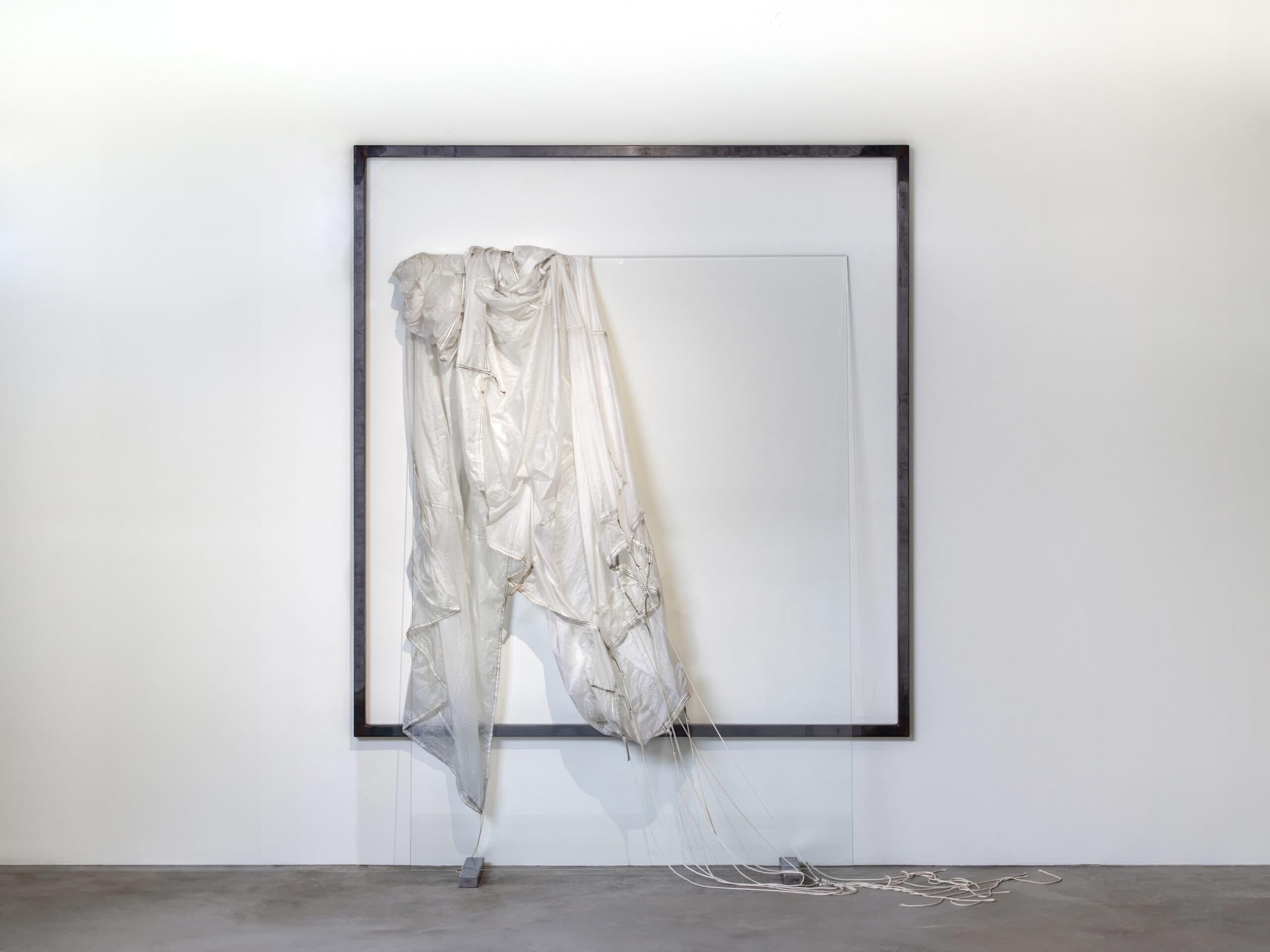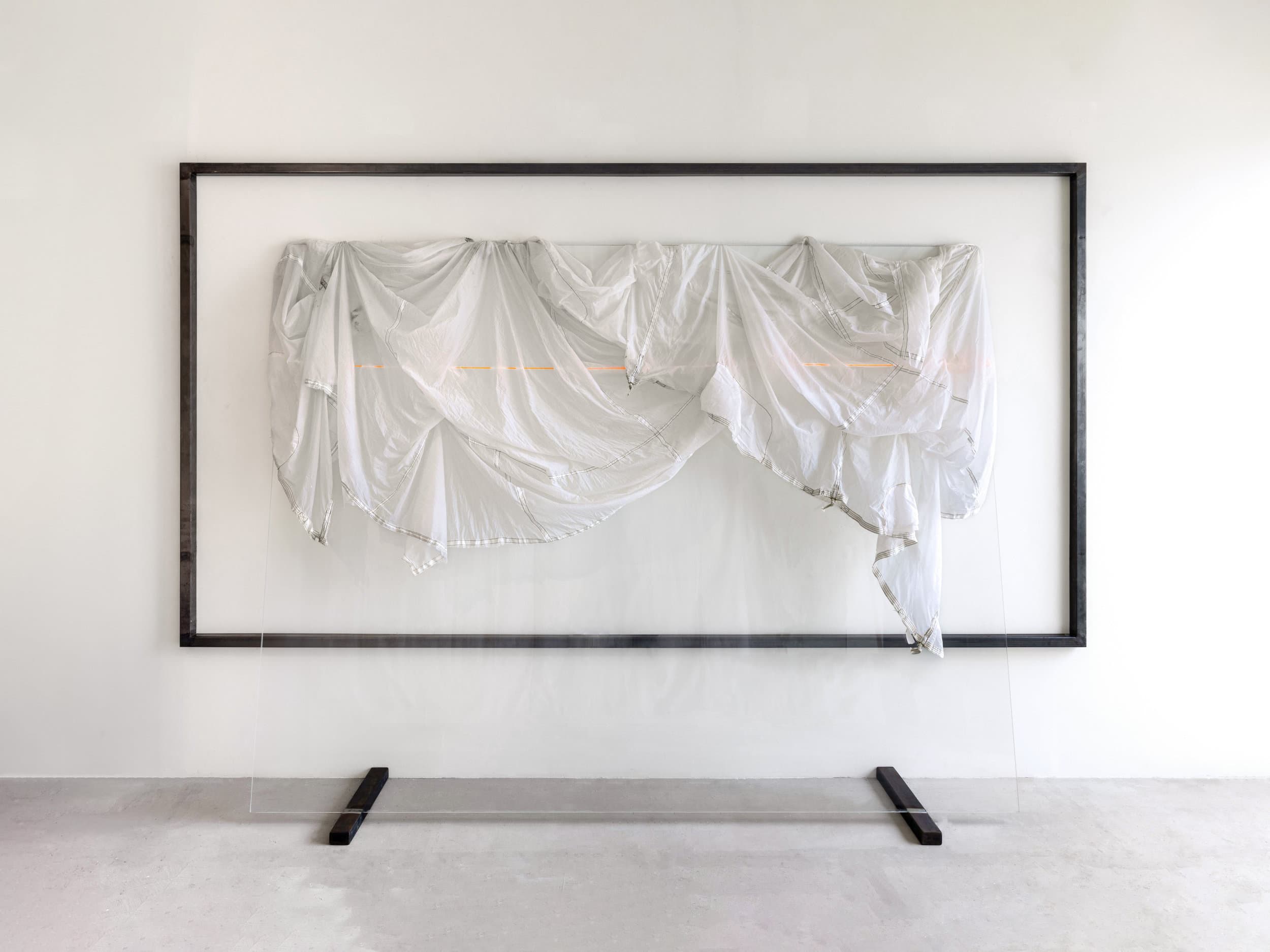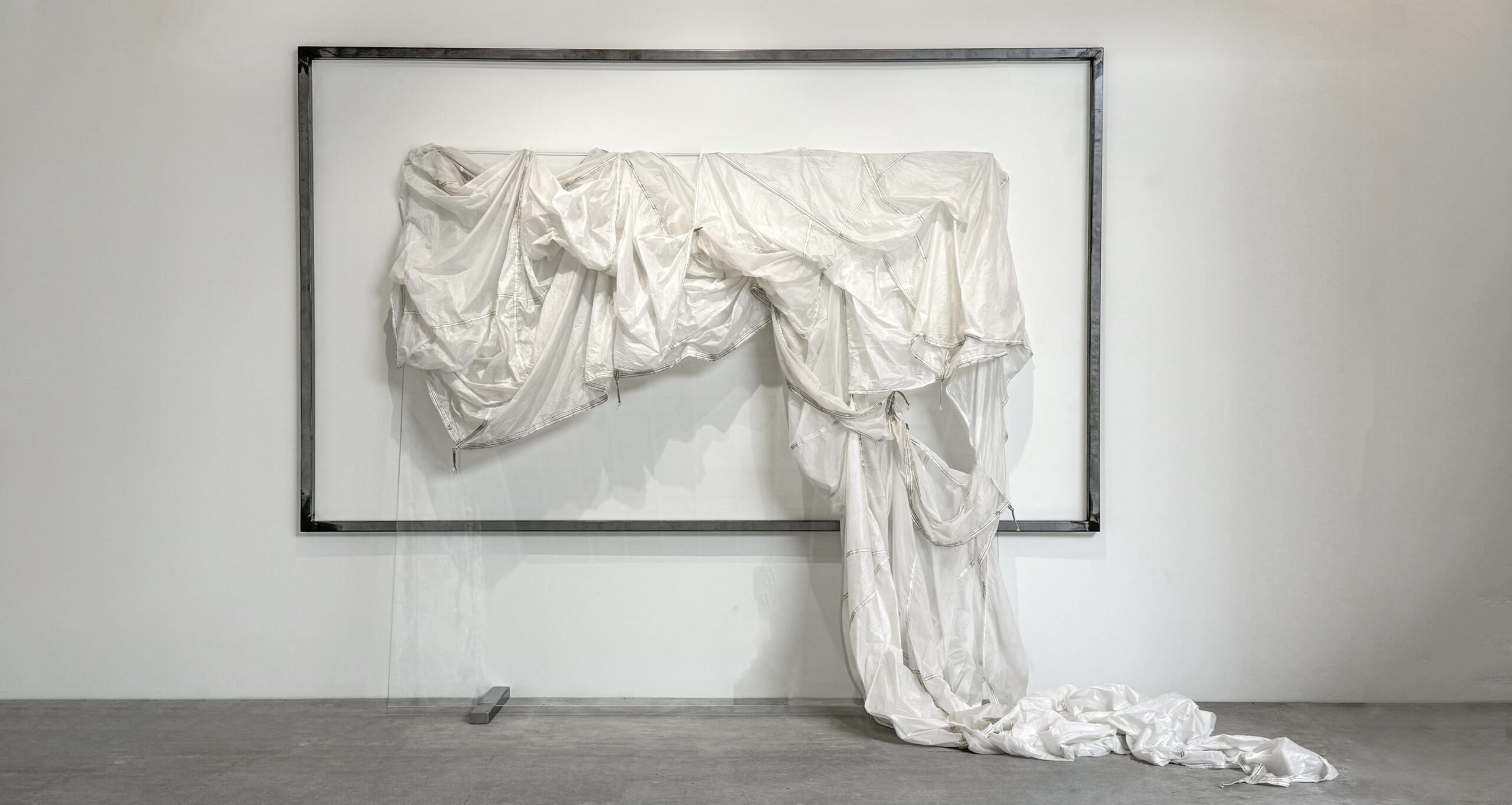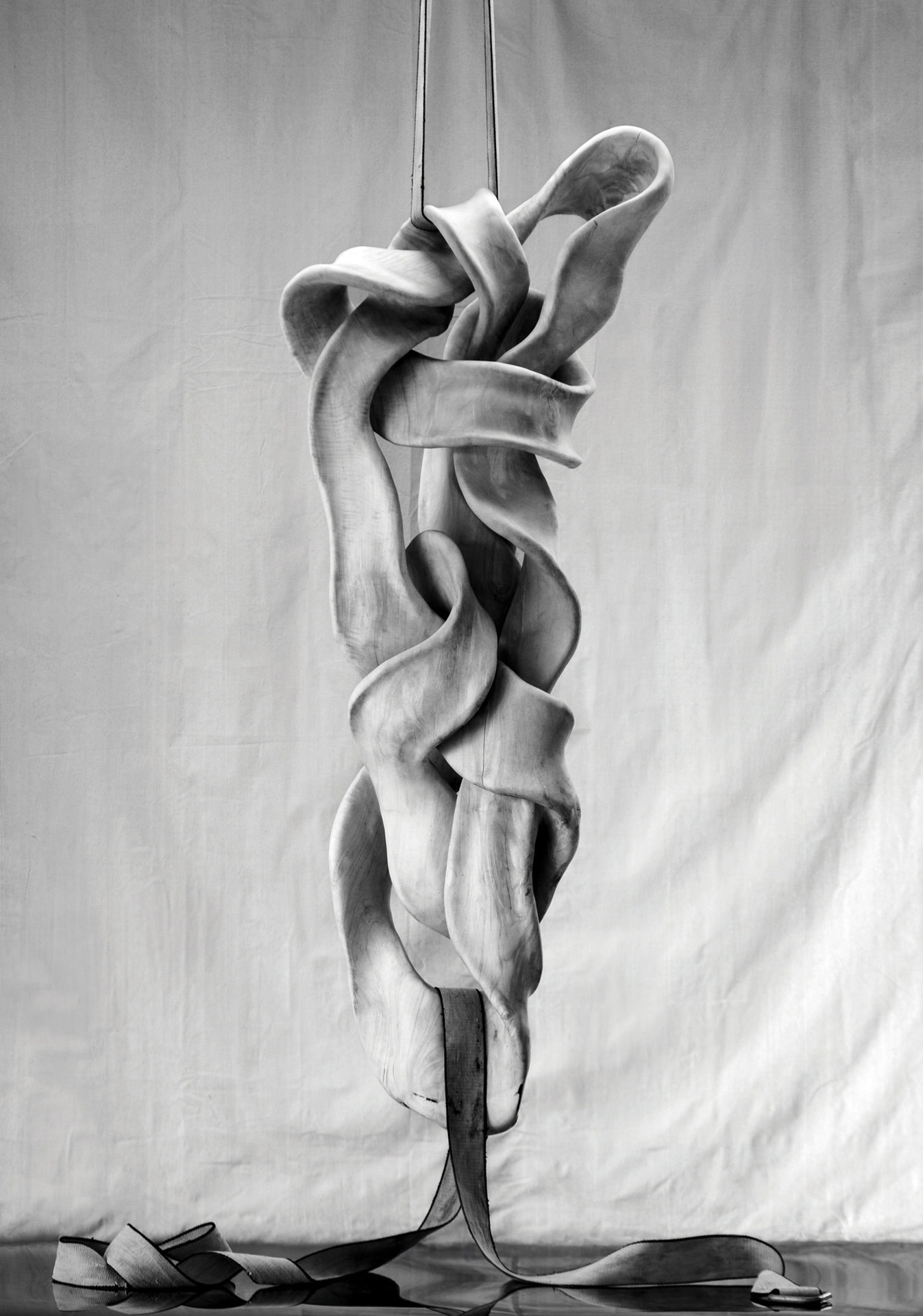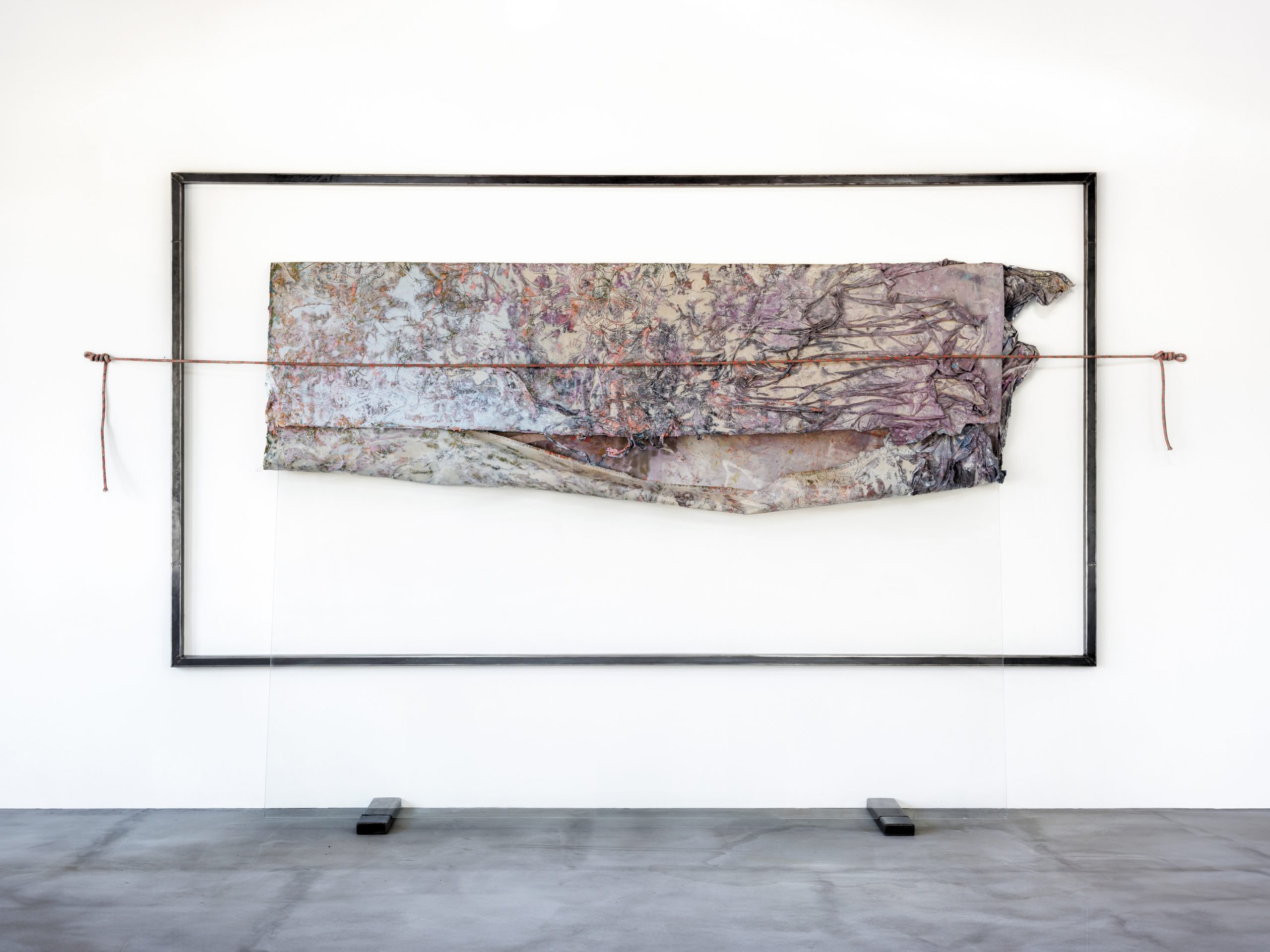
White Noise
Though known for her large-scale immersive installations, D’Annibale achieves a similarly visceral impact with White Noise on a more intimate scale. As a wall sculpture from the Liminals series, White Noise draws from architectural interventions, yet rather than disrupting an existing structure, it captures and introduces an entirely new environment to the space it inhabits. The work features a rectangular steel form, seemingly sliced diagonally, affixed to the wall. A gleaming orange line and mirror-like polished steel back subtly emerge through the white gradient glass top. D’Annibale challenges the viewer to navigate this visual ambiguity, encouraging an active process of discovery and demanding a deeper engagement to unravel the ‘static’ and find clarity. The work evokes a sublime quality, capturing the horizon and fog within its sleek, industrial frame. This juxtaposition of the sublime with the industrial creates a powerful visual and emotional tension, quieting the noise of contemporary life. Through its layered, blurred, reflective surfaces, the piece embodies a liminal space—caught between the tangible and intangible, between dawn and dusk—offering a moment of stillness in an otherwise chaotic world of information overload.
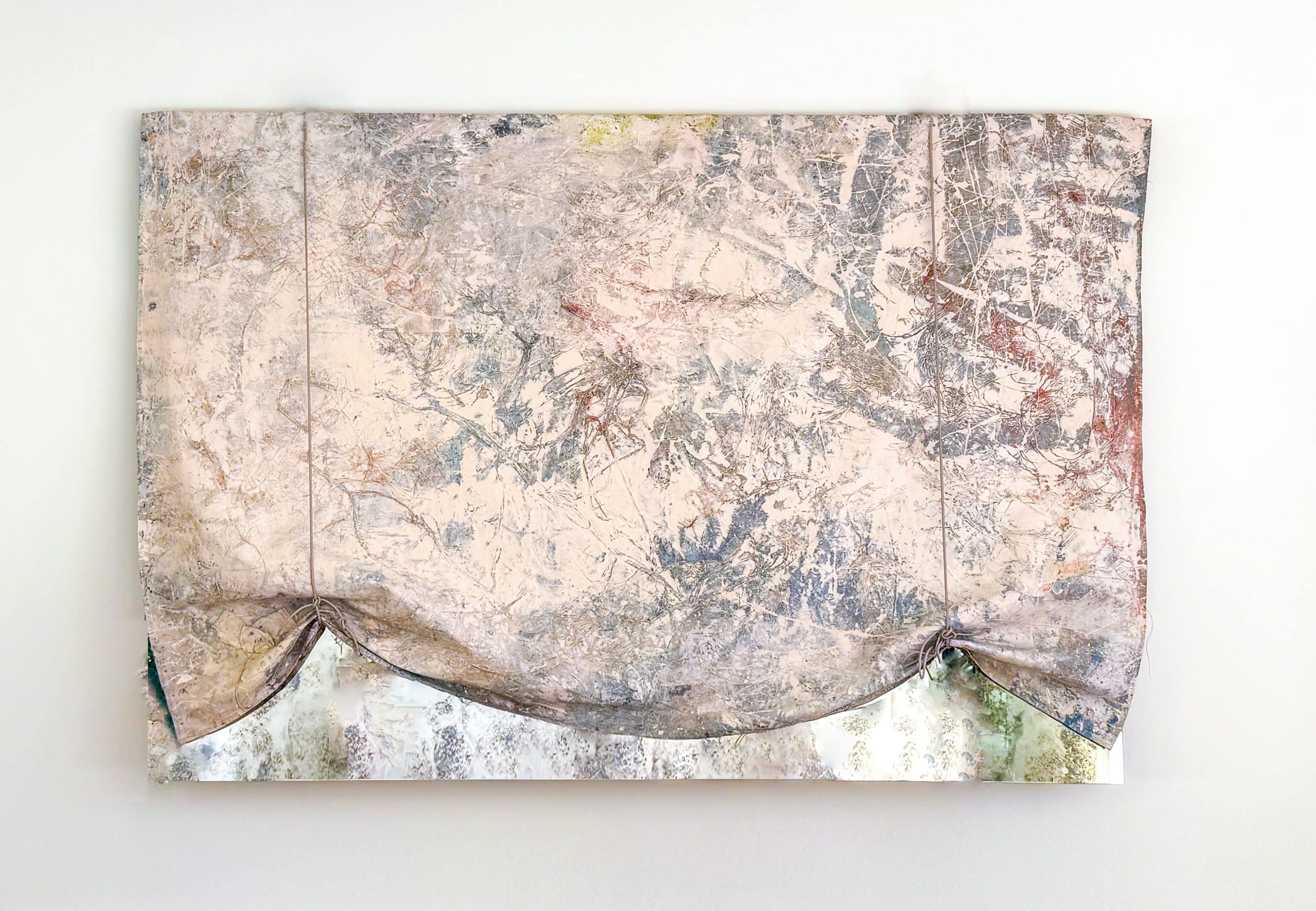
Restraint
A characteristic of D’Annibale’s practice is the inclusion of a wide range of materials from across different disciplines. This is one way in which she investigates the boundaries and intersections of mediums. The Restraint series embodies a fusion of painterly gestures with the sculptor’s sensitivity. A painted canvas is hung over an oxidized mirror and tied vertically by a single rope which pulls it up, creating drapes and revealing the sleek, tinted background. D’Annibale juxtaposes contrasting materials to achieve unexpected depth. At the same time, her treatment of the canvas challenges the traditional composition of a painting. Consequently, the Restrtaints are effectively sculptures, starkly present and infused with tension and mystery. Layering, covering, and uncovering are key to D’Annibale’s process aimed at disrupting established patterns and connecting with the viewer.
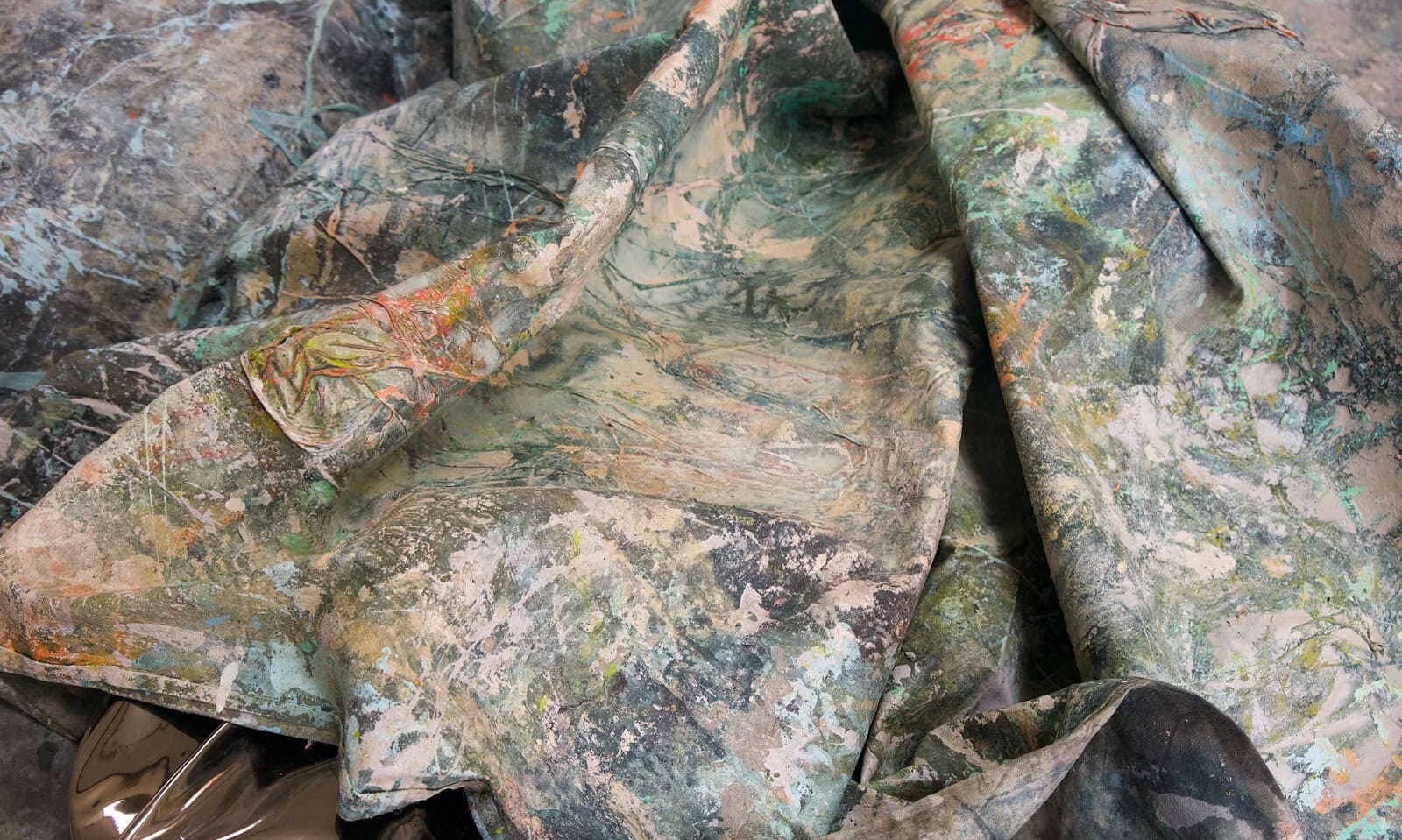
Untethered
D’Annibale’s unconventional trajectory has led her to delve into the concepts of different mediums and explore their boundaries. The deconstruction of a painting originated in the Restraint series and further evolved in the Picturas. Here, D’Annibale takes the traditional arrangement apart so that each element loses its original function and placement but gains sculptural qualities instead. The painted canvas is unstretched and hangs over the edge of the glass, which leans against the wall within an empty frame. A vintage string is attached to the wall outside the frame and runs horizontally across the canvas. D’Annibale typically plays with our perception, making the canvas ‘float’ and the composition expand into three dimensions. Prompted to investigate the relations between materials, forms and shapes, we notice the carefully thought-through balance that holds this work together.

Untethered: Chute
D’Annibale’s interest in and handling of materials is both technical and poetic. The Untethered series is part of a larger body of work marked by the use of vintage parachutes. The parachute’s paradoxical qualities strongly resonate with D’Annibale’s overall practice. Additionally, it commemorates a personal experience symbolic of letting go of control. The coexistence of the grid and intuition, tension and harmony, reason and poetry are prevalent in D’Annibale’s work. The silky, soft material covers the top edge of a sheet of glass, cascading down to the floor in complex yet elegant, effortless drapes. The metal frame hangs empty, binding the composition from behind. The mosaic of intricate folds and a variety of white hues give the parachute a sculptural body. D’Anniable continues to explore the notion of dimensionality by further deconstructing the medium of painting through different series, from the Restraints, to the Picturas and the Untethered. While there are compositional similarities, each series has a different sensibility. The Untethered pieces are less painterly, more minimal and somewhat ephemeral, as if the parachute had only just now deflated and landed on the glass.
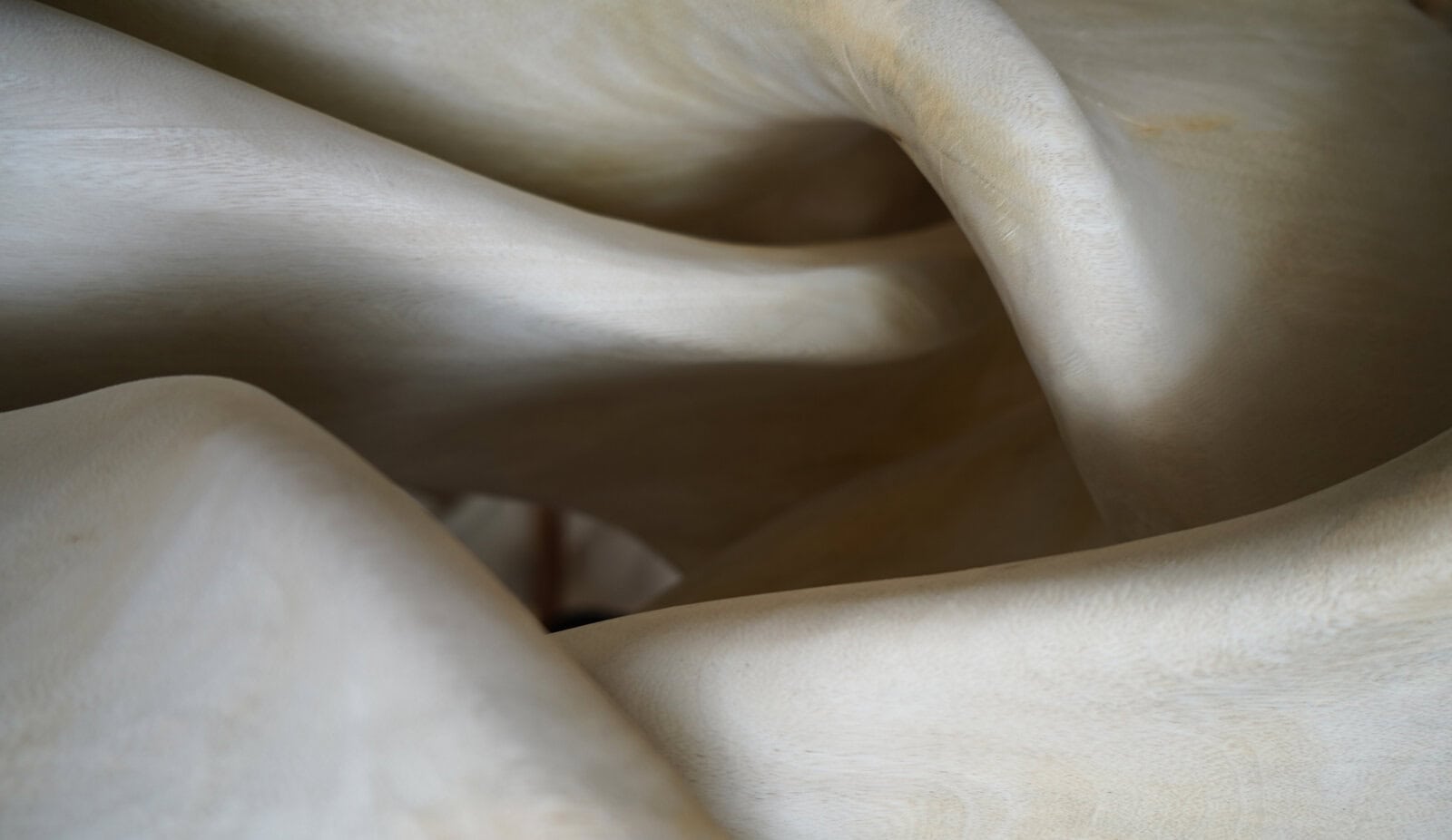
Exquisite Corpse
The Exquisite Corpse is a unique group of sculptures that speaks to Annibale’s profound relationship with nature and bridges various bodies of work; it incorporates pieces from the much earlier Hawaiian period and feeds into the composition of later Amalgams. The series is defined by complex, dense wooden forms carved from an entire tree. Their shapes follow the original natural tissue as part of D’Annibale’s intentional process. They look, therefore, intriguingly familiar yet, at the same time, distinctly novel. The sculptures hang suspended by a repurposed industrial strap from a metal frame or ceiling over a base of oxidized mirror and rebar. D’Annibale simultaneously draws inspiration from nature, treating it as a medium on its own, and confines it with industrial materials. Through contrast and intrigue, she points to the notion of environment as a sculptural capability of containing space.

